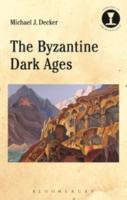
Bloomsbury (2016) p/b 246pp £17.99 (ISBN 9781472536037)
What are Dark Ages? Is the term useful or offensive? Is Byzantium from the sixth to ninth century worth the work, or do we continue to nod towards them as a difficult interlude? And behind all this the battle lines are drawn between what Decker calls ‘the continuists’ (things were different but no worse than before—indeed the ‘v-word’ [vibrant] appears), and ‘the declinists’ (things quite simply fell apart). Experience suggests that the answer will be more complex than that, and will not be generalised. So the book is largely a plea for more work on the Byzantine ‘Dark Ages’, with some practical suggestions on how it could be done, so that this period might gain the status of Late Antiquity, fought for and won relatively recently by scholars.
D., most usefully, summarises the work done to date on the subject. The finer, red slip pottery disappears from sites, but coarse ware remains and more locally produced material appears. The amount of handmade pottery increases, and white and green medieval glaze begins to appear. Mints close, and from mid-7th to the early 9th centuries the dearth of coin in Anatolia and the Balkans suggests political and fiscal crisis, although supply in the West is maintained. Earthquake, pandemic, migration and war take their toll on cities. Nicopolis (Bulgaria) is abandoned in the mid-5th century, and via fragmentation into hilltop hamlets is re-founded fifty or so years later as a fortified ecclesiastic compound with negligible networks, and is abandoned again by the end of the 6th century. Amorium in Anatolia fares better, and recovers surprisingly quickly after Arab attacks in 644 and 646, and was the home of Michael 2nd (802-829) of the ‘Amorian’ dynasty. The city survived the Arab siege of 838-842, and economic activity continued well into the medieval period. In the countryside arable land is on the decrease as the climate becomes cooler and wetter, and we see more evidence for keeping sheep and goats. Whether we call these changes transition, as people more or less successfully adapt to radically changed circumstances, or decline, is up for grabs.
So what do we do? D. makes it plain: review and integrate the vast amount of disparate archaeological material we have from the 7th-9th centuries. This was a period of huge change, initiated by human and natural interventions which ended Hellenistic civilisation, and introduced Byzantium’s ‘Macedonian Spring’ (which may not be as golden as at first sight). Then there are the (relatively few) texts, the epigraphy, names and seals. Internet databases make collaborative approaches possible which might be otherwise unaffordable. Look at ‘Prosopography of the Byzantine World’ (https://blog.pbw.cch.kcl.ac.uk) to see what is possible. The site defines its mission thus: ‘(P.B.W.) aims to record all surviving information about every individual mentioned in Byzantine textual sources, together with as many as possible of the individuals recorded in seal sources, in the period 642-1261.’ New technologies are available to map sites, like 3D scanning, terrain modelling and drones. We need work on what precisely happened to cities in this period, and to the social elites and peasants and the economy within which they interacted.
Herein, then, is a brief but clear summary of knowledge to date, where the disputes lie, and what we need to do to raise the profile of Dark Age studies, with extensive bibliography and index.
Adrian Spooner
